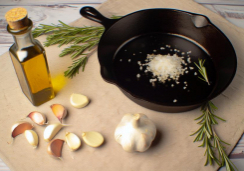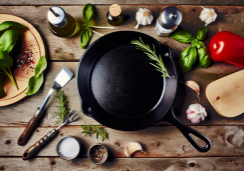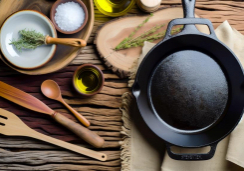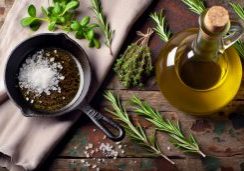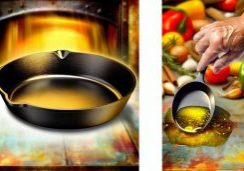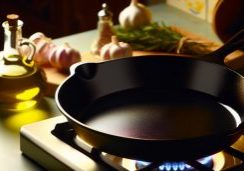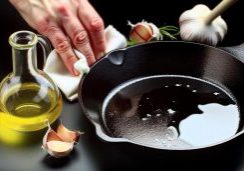Trustworthy Tips for Perfectly Cooked Vacuum-Sealed Steaks
Just as a craftsman meticulously selects their tools, you must choose your steak with the same precision to ensure a perfect meal. You're about to embark on a culinary journey that marries the art of patience with the science of temperature control.
The secret to achieving that restaurant-quality, edge-to-edge doneness lies within the realm of sous vide—a technique where your vacuum-sealed steak is immersed in a water bath, ensuring flavors are locked in and consistency is guaranteed. You'll find that the steps are straightforward: select your cut, season generously, seal it tightly, and set your water bath to the precise temperature.
But, what's the optimal heat for a medium-rare finish, and how long does your steak need to bathe in this controlled environment to reach its peak of succulence? Stay with me, and you'll learn how to unlock the full potential of your ingredients and elevate your home cooking to a level you once thought unattainable.
Selecting Your Steak Cut
When choosing your steak cut for sous vide cooking, consider opting for cuts like tenderloin or skirt steak, which transform into tender, flavorful dishes through the precise, low-temperature cooking method. Sous vide cooking involves immersing your steak in a temperature-controlled water bath, ensuring the internal temperature reaches perfection without overcooking.
The beauty of this technique is its ability to make even traditionally tougher cuts, such as skirt steak, succulent and mouth-watering. Thicker cuts like ribeye and strip steaks are also excellent choices, as they benefit from the longer cooking times possible with sous vide, allowing their marbling to render slowly, enhancing the flavor and tenderness.
Your personal preference plays a significant role in selecting the ideal steak for sous vide. Whether you favor the buttery softness of a well-marbled tenderloin or the hearty texture of a hanger steak, the sous vide process caters to your tastes, delivering steaks and roasts that are consistently perfect.
Experiment with various cuts and seasoning blends to craft your perfect sous vide steak. Remember, the key to sous vide success lies in the combination of cut, time, and temperature, each element working in harmony to create a steak that's tender and flavorful, precisely cooked to your liking.
Seasoning and Sealing
After selecting your ideal steak cut, it's crucial to focus on proper seasoning and vacuum-sealing techniques to maximize flavor and tenderness in your sous vide preparation. The seasoning process isn't just about slathering your steak with spices; it's also about ensuring those flavors penetrate effectively while the steak cooks to perfection at a precise temperature.
Here are the key steps to take:
- Season Liberally: Coat your steak with your chosen spices or marinade. This isn't just for taste—seasoning helps to tenderize the steak and locks in natural flavors.
- Securely Seal the Bag: Using a vacuum sealing system, ensure no air remains in the sealed bag. A proper seal prevents any water from entering and diluting the seasoning during the sous vide process.
- Chill Before Cooking: Give the vacuum sealed steak time to absorb the flavors by chilling it in the refrigerator for at least an hour before you start cooking.
Setting the Sous Vide Temperature
Dialing in the right water temperature is essential for achieving your preferred level of doneness in a sous vide steak. Precise temperature control is the hallmark of sous vide cooking, allowing you to cook meat to perfection with uniform results. For a vacuum-sealed steak, you'll want to set your sous vide machine to a specific temperature that corresponds to how you enjoy your steak.
Rare aficionados should target a water temperature of around 120°F (49°C), while medium-rare perfectionists might aim for 130°F to 135°F (54°C to 57°C).
If you relish a medium steak, adjust the hot water to a balmy 140°F to 145°F (60°C to 63°C). For those who prefer their steak medium-well, a temperature setting of 150°F to 155°F (65°C to 68°C) is ideal. And for a well-done steak, you'll need to crank the heat to 160°F (71°C) or higher.
Remember to secure your sealed steak in the water bath using a clip to prevent any movement that could interfere with the cooking process. And don't be afraid to experiment with different cooking temperatures and times to find the sweet spot that suits your palate. With sous vide, precision is your pathway to a perfectly cooked steak.
Cooking and Timing Guidelines
Let's delve into the precise timing and methods that will ensure your vacuum-sealed steak reaches its ideal doneness during the sous vide cooking process. Sous vide allows you to cook steak at low temperatures for extended periods, which results in perfectly cooked meat from edge to edge.
Here's what you need to know:
- Set the Water Temperature: Begin by setting your sous vide machine to the temperature that corresponds with your preferred level of doneness. Remember, the food is cooked evenly throughout, so there's no need to worry about under or overcooking.
- Adjust the Cooking Time: While sous vide is forgiving, the thickness of your steak will dictate the cooking time. A general guideline is 1 to 4 hours, but this can vary based on personal taste and steak size.
- Sear for Perfection: Once your steak is cooked, it's time to sear. Heat a skillet or grill to high heat and sear the steak for about 1 minute per side. This creates a delicious, crispy crust.
After searing, let your cooked steak rest for a few minutes before slicing. This allows the juices to redistribute, ensuring every bite is succulent. Alternatively, for a quick and impressive sear, use a blowtorch to add that perfect finishing touch.
Can I Use the Same Tips for Cooking Vacuum-Sealed Steaks and Sous Vide Steaks?
Yes, you can use the same sous vide steak cooking tips for vacuum-sealed steaks. The key is to ensure the temperature and timing are accurate for the desired level of doneness. Both cooking methods rely on precise temperature control to achieve tender and flavorful results.
Finishing With a Sear
Achieving the quintessential crust on your sous vide steak requires a high-heat sear to impart rich flavor and texture. Once your steak is cooked to perfection using the sous vide method, it's crucial to finish the steak with a searing technique that builds a delectable crust.
Heat a hot cast iron skillet or grill to an intense temperature for this essential step. The surface must be sizzling hot to quickly sear the steak, ensuring it develops a flavorful, caramelized exterior without overcooking the interior. Carefully place your steak in the pan or on the grill and let the high heat work its magic. This process shouldn't take long—a minute or two on each side is typically enough to achieve the desired crust on most cuts of meat.
After searing, it's equally important to let the steak rest. Set it aside for a few minutes before slicing; this allows the juices to redistribute throughout the meat, ensuring a succulent and flavorful steak. Don't be tempted to skip this step—patience here means the difference between a good steak and a great one.
Conclusion
You've mastered the art of sous vide with your perfectly selected, seasoned, and sealed steak. Set your water bath to the precise temperature and cook it according to the timing guidelines.
Don't forget the final touch—a hot sear for that irresistible crust. Follow these tips, and you'll impress with a steak that's consistently cooked to perfection.
Now, savor the flavors of your expertly crafted, vacuum-sealed masterpiece. Bon appétit!

